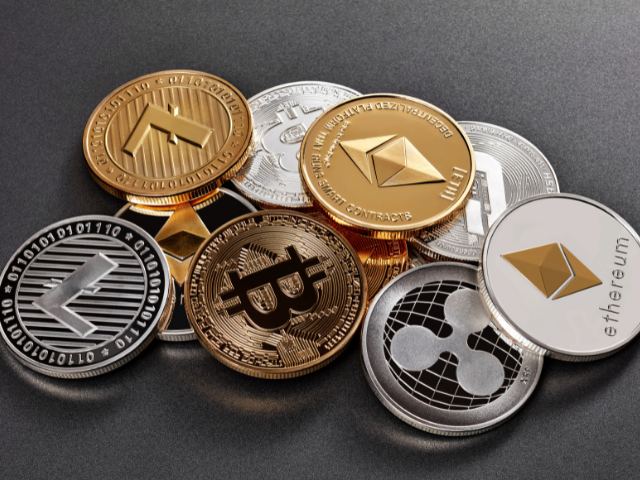What is Ethereum (ETH)? In a nutshell, Ethereum is an open-source that employs blockchain technology. It supports cryptocurrency to trade without the involvement of a middleman. It is known to be the most widely utilized blockchain. It has its own native cryptocurrency called Ether or ETH. It ranks second in market capitalization after Bitcoin. It also has its own programming language, Solidity.
You should also know that to operate DApps, Ethereum users must pay a charge. The charges are referred to as “gas” since they differ depending on the quantity of processing power utilized.
Ethereum was created to allow programmers to develop and release smart contracts and application servers (DApps) without fear of disruption, forgery, or third-party intervention.

The History Of Ethereum
Ethereum was first mentioned by Vitalik Buterin in a whitepaper in late 2013, with the intention of developing decentralized applications. His main idea was that Bitcoin and blockchain technology could be used for more than just currency.
They needed a computer language for app development to lead real-world goods like stocks and real estate linked to the blockchain. As he once said, “I thought (those in the Bitcoin community) weren’t addressing the issue in the best way. I assumed they were going after individual applications; they were attempting to kind of exceptionally maintain each (use case) in a sort of Swiss Army knife protocol.”
Buterin and the other co-founders of Ethereum conducted a crowdsourcing campaign in 2014 at the North American Bitcoin Conference in Miami. They sold partners Ethereum tokens (Ether) to get their idea up and running and collected over $18 million. Frontier, Ethereum’s first live launch, was released in 2015.
Ethereum is yet in its early stages and has the same issues as Bitcoin, namely in terms of scaling. In 2016, the Ethereum community was split into two blockchains: Ethereum (ETH) and Ethereum Classic (ETHC) (ETC), as a result of an unknown hacker stealing $50 million worth of Ether and causing security concerns about the platform. Ethereum’s structure has been improved in recent years.
Because it is less dominant than Bitcoin, it is more open to reformation efforts that could eventually make it a better alternative. Although it is still a young platform, its possibilities and uses are seemingly endless.
What Is The Ethereum Price Prediction?
The Ethereum news says that the road the second-largest cryptocurrency in the world has taken to success was not always easy, especially with the community attacking the project for its high transaction costs and the Ethereum 2.0 update’s delayed development.
However, it is still one of the most popular cryptocurrency projects. What is Ethereum related question that comes to everybody’s mind when it comes to investing in it? It is “should I invest in Ethereum?” Yes, you should!
Fortunately, Ethereum price predictions are constantly being updated. Many websites offer continuous updates concerning the price of Eths in comparison with dollars (Ethereum to USD) and many other currencies. They also offer 7 days forecast based on fundamental aspects. They guide you through buying or selling Ethereum according to the market.
Most studies show that there will be a good indicator in the future. ETH may be an excellent investment opportunity; that is why it is advocated to use this virtual currency in your portfolio because of its good outlook.

Ethereum 2.0
People have long waited for the upgrade known as Ethereum 2.0 or Eth2. What is Ethereum 2.0? It is designed to allow the network to increase production while also tackling capacity problems that have previously held it back.
Just like what happened in 2017 when a game named CryptoKitties slowed down transactions on the platform on its own. The primary goal of the update is to raise the network’s transaction speed from roughly 15 times/second to tens of thousands of times/second. This project is tended to be launched on three stages:
- Stage 0:
ETH 2.0 was released, on the 1st of December 2020, resulting in the Beacon Chain, a proof-of-stake (PoS) blockchain that will serve as Ethereum 2.0’s core management and agreement center.
- Stage 1:
In which shared chains will be created and linked to the Beacon Chain.
- Stage 2:
This will incorporate state execution on strand chains [13], with Ethereum 1.0’s current chain expected to become one of Ethereum 2.0’s fractures.
Ethereum Design
According to the “Ethereum Whitepaper,” the Ethereum design follows these fundamentals:
- Simplicity: The creatures made sure that the Etheurum protocol should be as simple as possible.
- Universality: They made it easy for a programmer to set up any contract he wants
- Modularity: If you add any kind of modifications to Ethereum, it continues to function as expected.
- Agility: improvements made at high-level construct are all taken into consideration.
Non-discrimination, non-censorship: programmers are allowed to do whatever they want with the system. They are not prevented from doing anything.

Ethereum Vs. Bitcoin
Ethereum is not very different from bitcoin, for they share many similarities. Bitcoin deals in cryptocurrency, while Ethereum allows various transaction methods, including the Ethereum Virtual Machine (EVM), cryptocurrency (Ethereum’s COIN is called Ether), and smart contracts. Ethereum permits both permission and permissionless transactions.
But Bitcoin only allows public (permissionless or censor-proof) transactions. Ethereum uses a “proof of stake,” and Bitcoin uses “proof of work” regarding security protocols. Now moving to block time, we see that Ethereum’s average block time is substantially shorter than Bitcoin’s.
Aside from their differences, the two are the makers of digital currencies that have become competitors in the world of business. And digital currencies are precisely that: coins with no physical existence but are portrayed by a chain of code that can be transferred at a price agreed upon by sellers and buyers.
Criticism Of Ethereum
When it comes to criticism, Ethereum is no different than any other cryptocurrency platform. Each of these systems consumes a tremendous amount of energy. Cryptocurrency miners, in especially, devote a significant amount of computing power to recording data.
China even justified the action of stopping down the mining operation for cryptocurrencies once by the renewable power loss caused by it. Not to forget that people are never sure when a specific cryptocurrency may rise or when it may fall. It all started in 2017 when Bitcoin’s value fluctuated between $20,000 and $3,000. Ethereum has also been criticized for its fees, but it all could change with the release of Ethereum 2.0.
Investing in stocks, cryptocurrencies, and other Initial Coin Offerings (“ICOs”) is highly risky and speculative. This article is not a recommendation by iCryptoApe or the writer to invest in stocks, cryptocurrencies, or other ICOs. Because each person or individual’s circumstances are unique, therefore, a qualified professional and/or a financial advisor should always be consulted before making any financial decisions and/or trading or buying stocks, cryptocurrencies, or other ICOs. iCryptoApe makes no representations or guarantees as to the accuracy or timeliness of the information included within.




